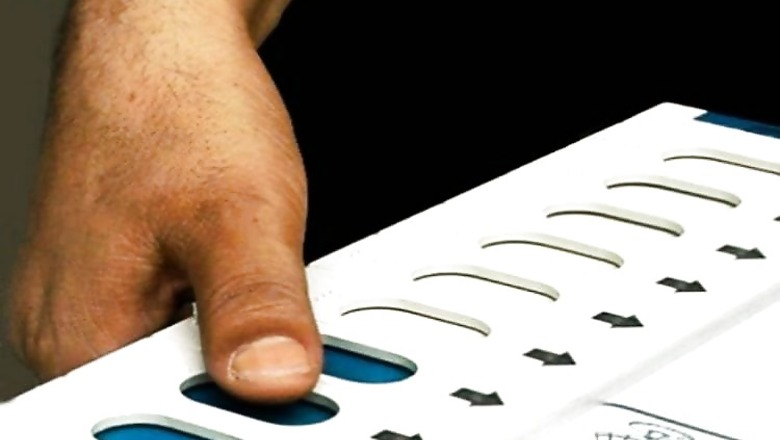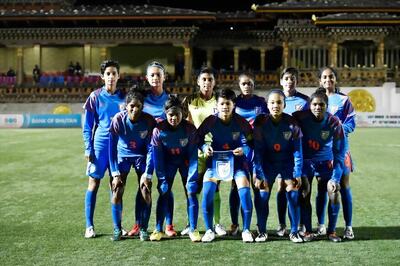
views
As the Indian summer sets in, the political temperature is bound to rise with four crucial states and one Union Territory going to the polls. Given that the states of India have emerged as the new centre of Indian politics, political developments in every state have major implications for both local and national politics.
Several months after the declaration of results, commentators continue to reflect on the adverse impact of the Bihar and Delhi elections on the image of the central government even as the Maharashtra, Jharkhand, Haryana and J&K polls were seen as a extension of the historic 2014 Lok Sabha elections mandate. The summer of 2016 will see the voters in West Bengal, Tamil Nadu, Kerala, Assam and Puducherry exercising their franchise to elect their state governments.
The politics and nature of electoral competition in each of these states is distinctly different. The stakes for the major political players is extremely high in each of these electoral races. Coming as they do at the end of the two years of the BJP led NDA government at the centre, the ripples that the state assembly election results would create would have an important bearing on the dynamics of party/political competition and define and decide the course of future politics.
The BJP enters this round of elections as the party ranged against the incumbent government in all the states. The Congress party is leading the government in two critical states (Assam and Kerala) and powerful state based parties are defending their track record as the ruling party in two other states (West Bengal and Tamil Nadu) with the Union Territory of Puducherry having a strong local party seeking a mandate for a second term.
This makes the political landscape extremely complex with each state going to the polls having its own unique electoral competition. It would be useful to independently analyze the key issues in each of the states and then surmise on the wider national ramifications of the polls.
In Assam, the Congress party has been in power for three terms. It does appear to face some negative impact of fifteen years of incumbency. Added to this has been the infighting that the party has witnessed and the frequent rebellions against the existing state leadership. In the Lok Sabha elections of 2014, the BJP did remarkably well in the state bagging half the Lok Sabha seats. This is the only state in the present round of elections where the BJP hopes to be able to form the government.
The star campaigner of the BJP – its Prime Minister, had launched the parties election campaign in Assam long before the announcement of the polls. The party has also strategically decided to name its Chief Ministerial candidate well in advance. It has now tied up with a key state based party, the Asom Gana Parishad besides cementing an alliance with the Bodo People’s Front. Its Chief Ministerial candidate has openly declared that its goal is to ensure the security and well being of the indigenous Assamese in the state.
Hoping to build on the momentum created during the Lok Sabha elections, the BJP faces a slight disadvantage in terms of the electoral promises made by the party during that elections being largely unfulfilled. It had promised action against Bangladeshi migrants and asserted that it would not concede any territory to Bangladesh in the negotiations on exchange of enclaves.
The Congress faces a stiff challenge in retaining the state it has been the ruling party in for fifteen years. It is likely to have an electoral understanding with the All India United Democratic Front (AIUDF), a party which draws its electoral support from the sizeable Muslim community in the state. Winning Assam would be an important morale booster for the BJP as this is the only state in this round of polls it can hope to emerge as the ruling party.
For the Congress which is trying to bravely face the impact of anti-incumbency, a defeat in Assam, would place it as a distinct disadvantage as the number of states it is in power would further shrink.
Kerala sees a clear attempt by the BJP to break into the traditional bi-polar alliance competition one has seen in Kerala. Having allied with the BDJS that claims to enjoy support in the powerful Ezhava community in the state, the BJP hopes to emerge as an important third force in the state. The BJP secured a little over 10% of the votes in the state in the last Lok Sabha elections. Kerala has historically seen an alternation in power between the Congress led UDF and the CPM led LDF.
With the UDF being in power and having been embroiled in several political controversies, the stage seems set for the LDF to claim its five year term. The presence of the BJP has slightly queered the pitch as many argue that it could cut into the traditional vote base of the LDF. A keen electoral contest on the cards in this state where electoral victories are decided by wafer thin margins of vote share between the two major alliances.
West Bengal would see a powerful state based party the Trinamul Congress under the leadership of Mamta Banerjee seeking a second term in office. Given the goodwill that the Chief Minister continues to enjoy and the inability of the Left to recover from its historic defeat of 2011, the Trinamul Congress seems set to return to power.
Two factors could be critical in deciding the extent of the Trinamul victory. There is talk of a Left – Congress alliance to consolidate the anti-Trinamul vote. It would be difficult for these parties to explain their alliance in West Bengal and their direct electoral competition in Kerala. Further, such an alliance may not go down well with the cadres of the parties as they have traditionally been electoral rivals in the state. Secondly, the BJP had made a splash in the electoral landscape of Wes Bengal during the Lok Sabha elections by securing 17% of the votes and 2 of the 42 Lok Sabha seats. Would the BJP be able to sustain this performance in a state assembly election is something that would be closely observed.
The alliance arithmetic in Tamil Nadu is still unclear resulting in the political chemistry continuing to remain fluid. The two major state based parties – the ruling AIADMK and the DMK are both hoping to make a strong bid for power but the political moves of the Vijaykanth led DMDK are being keenly watched. While the BJP hopes to carve a third force with the DMDK, there are also talks of the DMDK joining the DMK led alliance. The BJP secured the third highest votes share in the 2014 Lok Sabha elections in the state (after AIADMK and DMK). The Congress has already thrown its weight with the DMK. The state is poised to see a very keen contest with many commentators arguing that the AIADMK seems to have the upper hand. Much would depend on the final shape and composition of the alliances in the state.
It is this clearly evident that the political heat that will be generated in the summer of 2016 by the key state elections is bound to dramatically impact on the political weather across the country. With key regional players hoping to assert their presence in West Bengal and Tamil Nadu, the Left would hope that the electoral cycles that Kerala is used to would play out this time around too. For the Congress, it faces an uphill task of being able to retain the two states it is in power. The BJP is clearly making every effort to wrest Assam and sustain the momentum it has generated in the Lok Sabha polls in the other three states. An interesting political battle that would clearly impact on the fortunes of major political players and shape in significant ways, the future course of national politics.
(Author Dr Sandeep Shastri is a keen student of politics who is currently the Pro Vice Chancellor of Jain University at Bengaluru)




















Comments
0 comment